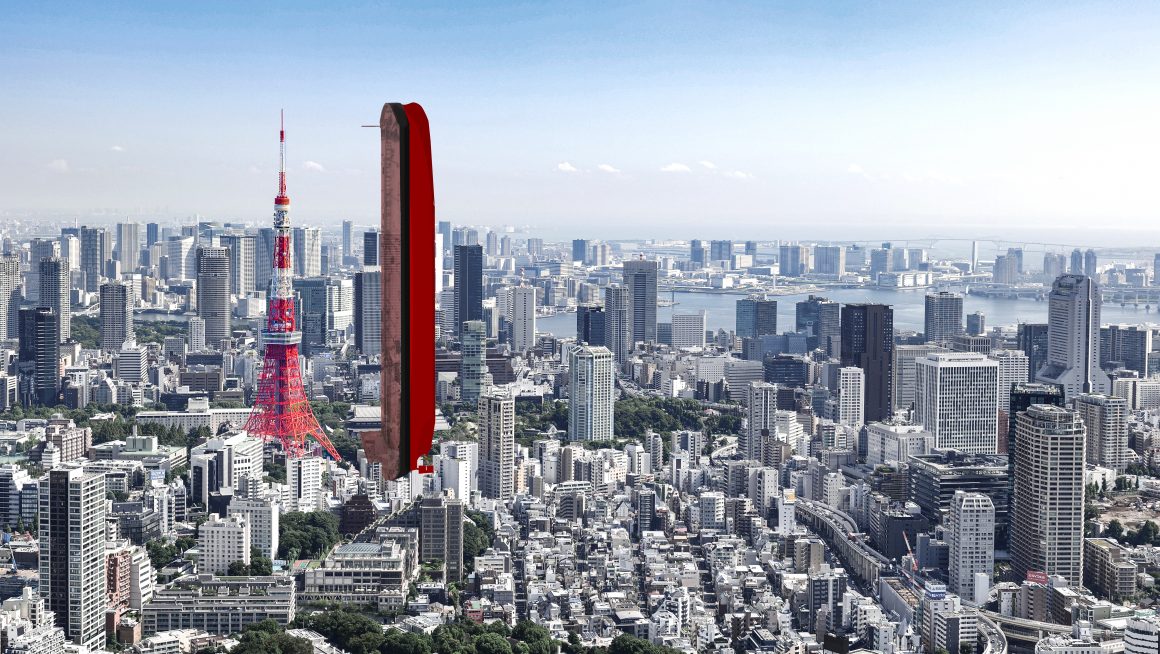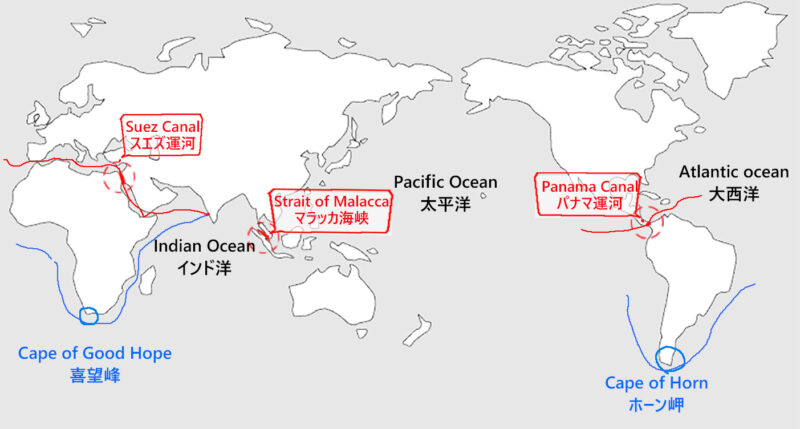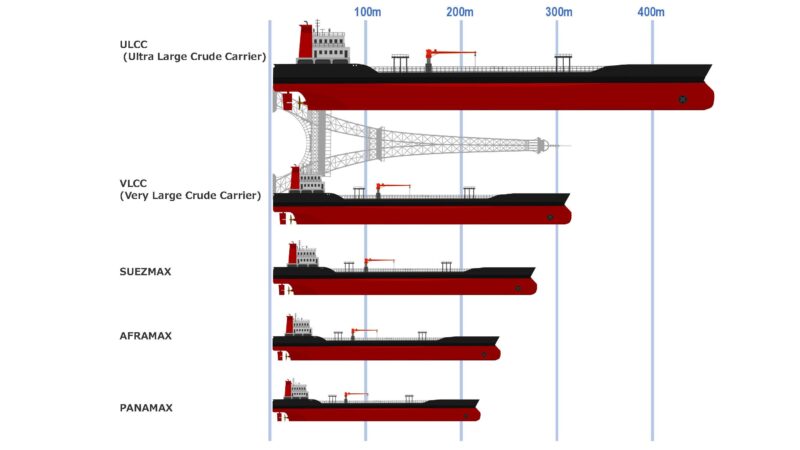Beyond the imaginable Scale

Ships traveling the ocean route are often extremely larger than we know. Categorization based on their sizes differs according to the types of their usages. But one way to understand their sizes is the when they are called based on the names of canals or capes they are able to pass through. For example, Panamax or Suezmax tells you that they are ships able to pass those canals.
Ships larger than these canal "max" sizes are not able to pass those canals, but need to detour the large continent to head the capes. These are called "cape size". Or sometimes putting the word "very large" on top, they are called VLCC (Very Large Crude oil Carrier) or VLOC (Very Large Ore Carrier).


Compared with the larger carriers, the smallest PANAMAX shown above may look tiny. But they still are about 230 meters long (750 feet). VLCC are about 330m, almost the size of Eifel Tower or Tokyo Tower. They are normally too large to be docked on piers, so that they need be anchored offshore to a device called berth connected to oil tanks on the coastline with pipelines.
